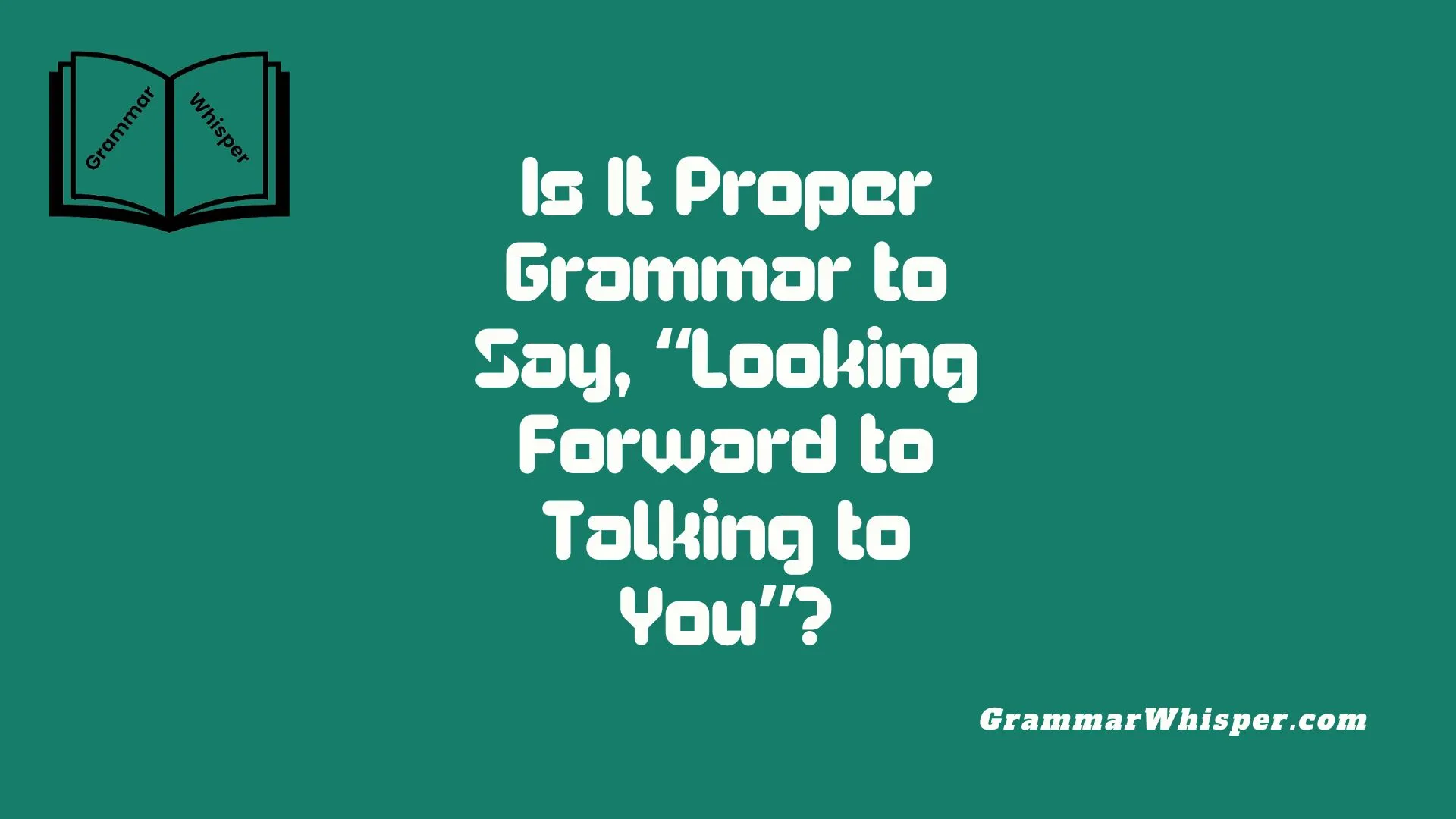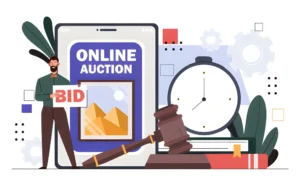In many professional settings, whether you’re writing a job application, following up after interviews, or networking, the phrase “Looking forward to talking to you” shows up often. You might send it in a polite email to a customer, recruiter, or internal team. It’s especially common in business communication, where tone and word choice play a key role. People in corporate, customer service, and hiring roles use this expression frequently because it feels natural and respectful. But is it correct? Yes – absolutely. This has to do with the grammar, structure, and usage of gerunds and prepositions. While some learners think “to talking” is wrong, it’s actually the preferred form in many real-life situations like sales pitches and follow-ups. It fits cleanly into standard English language patterns, making it both practical and stylistically appropriate.
What makes this phrase work is the logic of English grammar mechanics. After the preposition “to,” we use a gerund, not an infinitive. That’s why “Looking forward to talking” is acceptable, while “Looking forward to talk” is not. If you’re crafting natural business messages, this is a phrase worth mastering. Its reach is wide – from resumes and automated responses to internal chats and conversation threads. Even better, it conveys warmth without sacrificing clarity. For fast-paced industries, using expressions that are grammatically correct, culturally appropriate, and easy to understand is essential. This one checks all those boxes. As you continue building practical awareness, notice how often it’s used around you – and how strategically it softens tone while maintaining professionalism.
Understanding the Phrase: “Looking Forward to Talking to You”
The phrase “Looking forward to talking to you” is a grammatically correct and widely accepted structure in both formal and informal communication.
Here’s why:
- “Looking” is a present participle functioning in the continuous tense.
- “Forward to” is a prepositional phrase, and the “to” is a preposition, not part of an infinitive.
- “Talking” is a gerund, or verb acting as a noun.
So the grammar structure looks like this:
[Subject] + am/is/are looking forward to + gerund/noun
Examples:
- ✅ I am looking forward to talking to you.
- ✅ We’re looking forward to meeting you next week.
- ✅ She is looking forward to starting her new role.
❌ I am looking forward to talk to you. This is incorrect because “to” is not an infinitive marker here. It’s a preposition, and prepositions must be followed by nouns or gerunds, not base verbs.
The Grammar of Anticipation: How English Talks About the Future
English has a wide array of ways to express future plans or desires – from the plain future tense to subtle emotional cues.
Let’s examine how grammar supports anticipation.
Future Tense vs. Emotional Anticipation
In traditional grammar, you might use the simple future:
- I will talk to you tomorrow.
- She will attend the meeting next week.
But emotional or social anticipation doesn’t always follow future tense. Instead, it uses present continuous forms combined with emotional verbs like look forward to, hope, can’t wait, eager, etc.
These phrases are:
- More expressive
- More polite
- Often more conversational
Examples of Emotional Anticipation in English:
- Looking forward to talking to you soon.
- Can’t wait to hear from you.
- Hope to see you there.
- Eager to discuss this in more detail.
These structures soften directness and add warmth – a must in professional or personal emails.
Gerunds vs. Infinitives: The Root of the Confusion
Much of the confusion around “looking forward to talking to you” stems from not understanding gerunds and infinitives.
Let’s clarify:
What Is a Gerund?
A gerund is a verb ending in -ing that functions as a noun.
Examples:
- Swimming is fun.
- I enjoy reading.
- She apologized for being late.
In the phrase looking forward to talking, “talking” is a gerund, and it’s the object of the preposition “to.”
What Is an Infinitive?
An infinitive is the base form of a verb, usually preceded by “to.”
Examples:
- I want to swim.
- He hopes to win.
- They need to leave.
But not every “to” introduces an infinitive – and this is where people get confused.
The Rule: “Look forward to” Requires a Gerund
The phrase “look forward to” always requires a noun or a gerund, not an infinitive.
✅ I look forward to meeting you. ❌ I look forward to meet you.
To make this crystal clear, here’s a comparison table:
| Verb Phrase | Correct Structure | Example |
| Look forward to | Gerund | Looking forward to seeing you |
| Hope | Infinitive | Hope to see you |
| Apologize for | Gerund | Apologize for being late |
| Plan | Infinitive | Plan to arrive early |
| Admit to | Gerund | Admit to making a mistake |
Is It Okay to Omit the Subject? (Yes, But Here’s Why)
In formal grammar, complete sentences have a subject and a verb. But real-world communication is flexible, especially in emails, chats, or casual writing.
Let’s compare:
- ✅ I am looking forward to talking to you. (Full sentence)
- ✅ Looking forward to talking to you. (Elliptical sentence)
The second version omits the subject and helping verb (I am), but it’s perfectly acceptable in email signatures, follow-ups, or text replies where tone is informal but polite.
When It’s Okay to Omit the Subject
- Business emails (e.g., “Looking forward to our meeting!”)
- Friendly messages
- Chat apps (Slack, Teams, WhatsApp)
When You Should Include the Full Sentence
- Academic writing
- Resumes and cover letters
- Formal legal or official documents
This kind of ellipsis (intentional omission) is grammatically acceptable when context makes the subject clear.
“To” vs. “With”: Which One Should You Use?
Another common question: Should you say talking to you or talking with you?
Both Are Grammatically Correct.
But they’re not identical in tone.
| Phrase | Tone/Usage |
| Talking to you | Slightly more formal or neutral |
| Talking with you | More collaborative or warm |
- “Talking to you” implies a one-way interaction (e.g., a presentation or announcement)
- “Talking with you” implies a two-way conversation or mutual exchange
Example:
- Looking forward to talking to you about the budget update.
- Looking forward to talking with you during the panel discussion.
So which one should you use?
- If you’re speaking to a group or giving information, use to
- If it’s a collaborative setting, use with
Common Mistakes and How to Fix Them
Here are some of the most common errors people make with this phrase – and how to correct them.
| Incorrect Phrase | Why It’s Wrong | Correct Version |
| Looking forward to talk to you | Uses an infinitive instead of a gerund | Looking forward to talking to you |
| Look forward talking to you | Missing “to” after “look forward” | Look forward to talking to you |
| Looking forward for talking to you | Wrong preposition – “for” is incorrect | Looking forward to talking to you |
| I’m looking forward to speak with you | Infinitive “to speak” after preposition “to” | I’m looking forward to speaking with you |
Quick Grammar Tip
Always remember: “to” in “look forward to” is a preposition, not part of an infinitive. Prepositions are followed by nouns or gerunds, not base verbs.
Use Cases in Real Communication
Let’s look at how this phrase works in different real-world situations.
In a Business Email
Looking forward to talking to you during Friday’s strategy call.
In a Job Interview Follow-Up
Thank you for your time today. I’m looking forward to talking with you again soon.
In Customer Service
We appreciate your feedback and look forward to talking to you further about your experience.
In Texts or Slack Messages
Talk soon! Looking forward to chatting with you about the designs.
In Resumes or Cover Letters
I look forward to the opportunity to speak with your team about this role.
These examples highlight the phrase’s politeness, professionalism, and approachability – which is exactly why it’s so popular.
Contextual Alternatives for Different Tones
Sometimes, you might want to say something similar but with a slightly different tone or level of formality.
| Alternative Phrase | Tone | Example Usage |
| I’m eager to speak with you | Formal, enthusiastic | Job application or executive email |
| Can’t wait to talk to you | Casual, friendly | Personal email or text |
| I look forward to hearing from you | Professional | Business follow-up or inquiry |
| Talk soon! | Casual, brief | Slack message or group chat |
| I’m excited to connect | Friendly, modern | Networking email or LinkedIn message |
Summary: What’s the Final Verdict?
So – is it proper grammar to say, “Looking forward to talking to you”? Absolutely, yes. And here’s why:
- It uses the correct grammatical structure: look forward to + gerund
- It conveys anticipation and politeness
- Subject omission is acceptable in informal writing
- The tone is both professional and approachable
“Looking forward to talking to you” is more than grammatically correct – it’s a linguistic bridge between formality and friendliness.
Final Thoughts
The phrase “looking forward to talking to you” combines grammar precision with social warmth. It’s a staple of effective communication, whether you’re applying for a job, replying to a client, or ending a Zoom call.
So the next time you type it, you can feel confident that not only is it proper grammar, but it’s also one of the most versatile phrases in modern English.
FAQs
Can I say “looking forward to talk to you”?
No. That’s grammatically incorrect because “to” is a preposition, and it must be followed by a gerund, not an infinitive.
Is “talking with you” better than “talking to you”?
It depends on tone. “With” feels more collaborative, while “to” is neutral and more common in business contexts.
Should I include “I am” before “looking forward…”?
Yes, in formal writing. But it’s fine to omit in emails or messages where tone is friendly and casual.
Is it wrong to say “looking forward for talking to you”?
Yes, that’s incorrect. The phrase is “look forward to,” not “look forward for.”
Why do so many people get this wrong?
Because “to” looks like an infinitive marker, not a preposition. Once you know the rule, it’s easy to remember.











